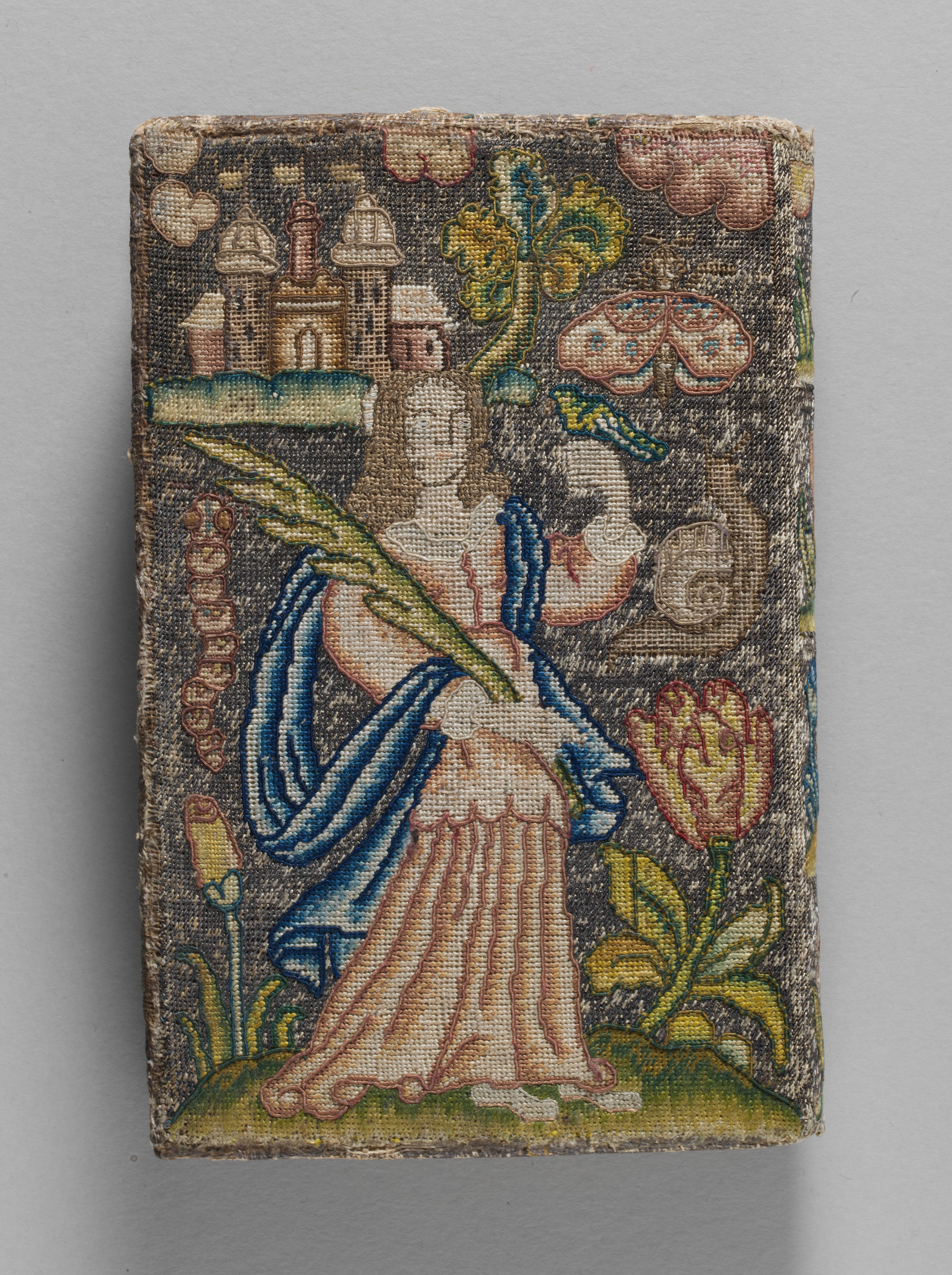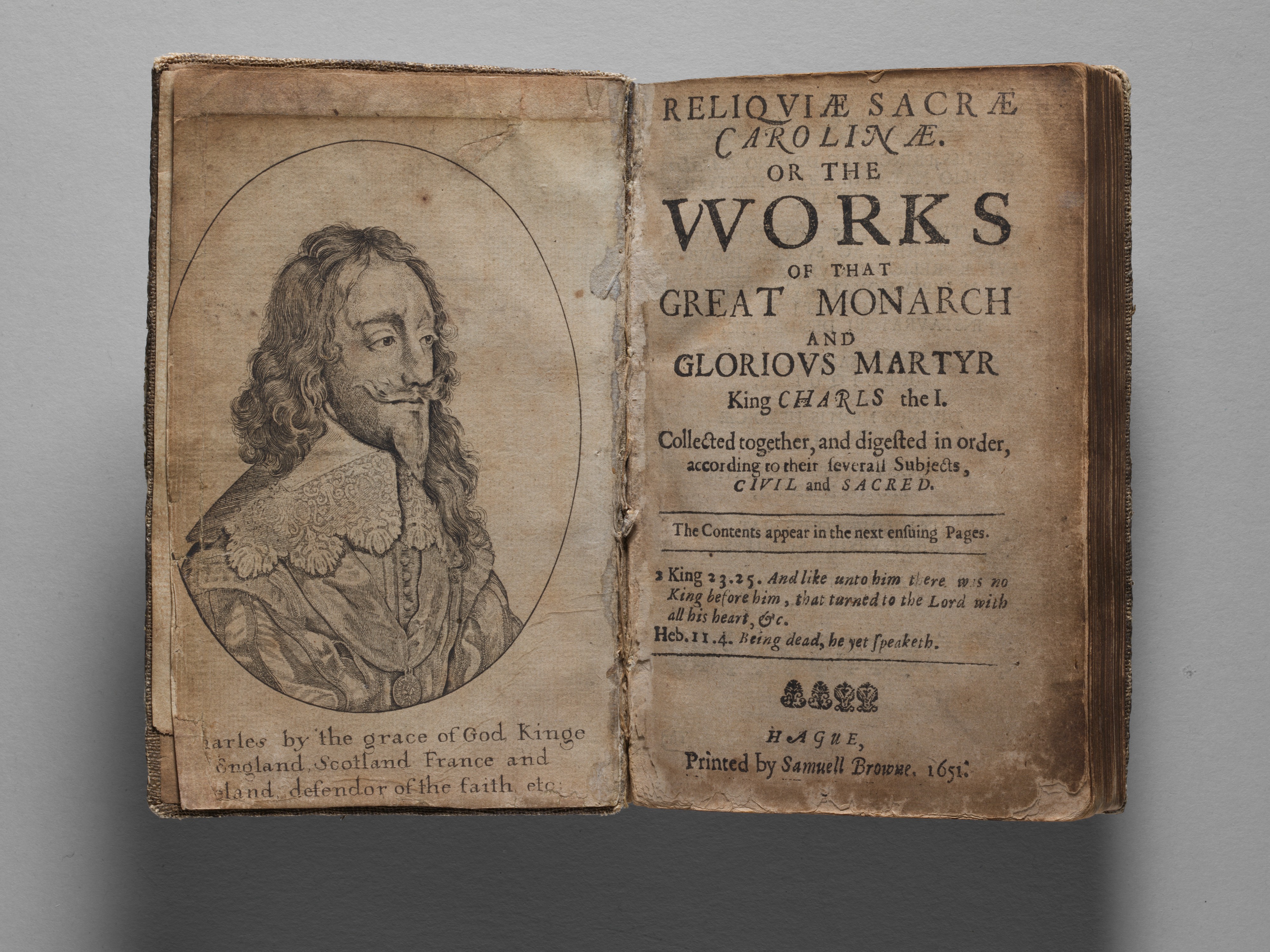Book cover
Not on view
This volume is a compendium of the writings of King Charles I pertaining to the last years of his reign. It is divided into two parts—"matters Civil" and "matters Sacred"—and includes additional material gathered from his supporters about events surrounding his death. It constitutes an expanded edition of an earlier compilation, the Eikon Basilike [Image of the King]: The Poutraicture of His Sacred Maiestie in His Solitudes and Sufferings, a 1649 printing of which is bound into the second part of the volume. The Eikon Basilike purported to be a collection of the writings of Charles I that presented the major events of his life and reign from his own point of view in language that was simple, direct, and, for a monarch, unprecedentedly personal. This narrative was interspersed with the king’s favorite prayers and psalms in a style that directly echoed the Penitential Psalms of King David and thereby offered both a justification of his rule and a kind of spiritual autobiography.
The Eikon Basilike was first published by Richard Royston, who was the leading Royalist publisher in London throughout the Civil War period and who was imprisoned in 1645 for issuing "scandalous books and papers" against the Parliament and thereafter in constant danger of further harassment at the hands of the Council of State. By his own account, Royston received orders directly from the king in October 1648 to prepare his printing press; on December 23 he was given the manuscript through an Edward Simmons, as from the king, and had it printed. Charles’s authorship has been contested from its first appearance to the present day, although it is now widely agreed (as the Royalist apologists had insisted) that the core of the book was Charles’s but that the materials were shaped into their final form by his chaplain, the Presbyterian divine John Gauden, later bishop of Exeter.
From the beginning, the Eikon Basilike was a hugely popular best-seller and became the chief focus of national grief and guilt after the king’s death. The book was sold on the streets of London on January 30, 1649, the day of Charles’s execution, and went through thirty-five English editions that year. It became, in effect, a form of common property, hotly debated among Parliamentarian detractors and their Royalist opponents and prompting numerous rebuttals and counter-rebuttals, including John Milton’s furious rejoinder, Eikonoklastes, which appeared on October 6, 1649. As Elizabeth Wheeler emphasized, the Eikon Basilike had no single fixed appearance and from the first was subject to numerous additions of text and images. The work also appeared in a range of cheap to expensive editions and in different formats, from regular folio size to tiny miniature versions.
The present copy of Reliquiae Sacrae Carolinae is one product of this process, although Frances Madan noted that all the additional materials within were vouched for by persons who were near the king and involved in the publication process of the original Eikon Basilike. It includes a miscellany of the king’s speeches to Parliament, his "Messages for Peace," and, in the second part, a selection of his prayers, the text of the Eikon Basilike, his "papers about Church Government," a list of the judges who officiated at Charles’s trial in a section headed "Severall things relating to His Majesties Death, a list of London’s mayor and city aldermen, and various speeches and epitaphs by others made after the king’s death. According to Madan, this edition was published in London by Roger Norton with the false Hague imprint of Samuel Browne, suggesting that there was an inherent danger for Royston and his London printer, Roger Norton, in publishing such materials during these years.
The embroidered cover of this volume has on the front the figure of a woman holding a cornucopia, probably representing Plenty; on the back is a woman holding a palm branch, presumably Peace. Plenty and Peace were likely qualities that the owner attached to monarchical rule. Embroidered references or borrowings from the Eikon Basilike include in the Victoria and Albert Museum collection an embroidered panel after the William Marshall engraving used as the frontispiece for the 1649 version of the Eikon Basilike (inv. no. T.117-1936). The frontispiece of this volume is an engraved portrait of Charles I by Wenceslaus Hollar (MMA, 17.50.85) that is derived from the double portrait of Charles and Henrietta Maria by Anthony van Dyck.
[Andrew Morrall, adapted from English Embroidery from The Metropolitan Museum of Art, 1580-1700: 'Twixt Art and Nature / Andrew Morrall and Melinda Watt ; New Haven ; London : Published for The Bard Graduate Center for Studies in the Decorative Arts, Design, and Culture, New York, The Metropolitan Museum of Art, New York [by] Yale University Press, 2008.]
This image cannot be enlarged, viewed at full screen, or downloaded.
This artwork is meant to be viewed from right to left. Scroll left to view more.




